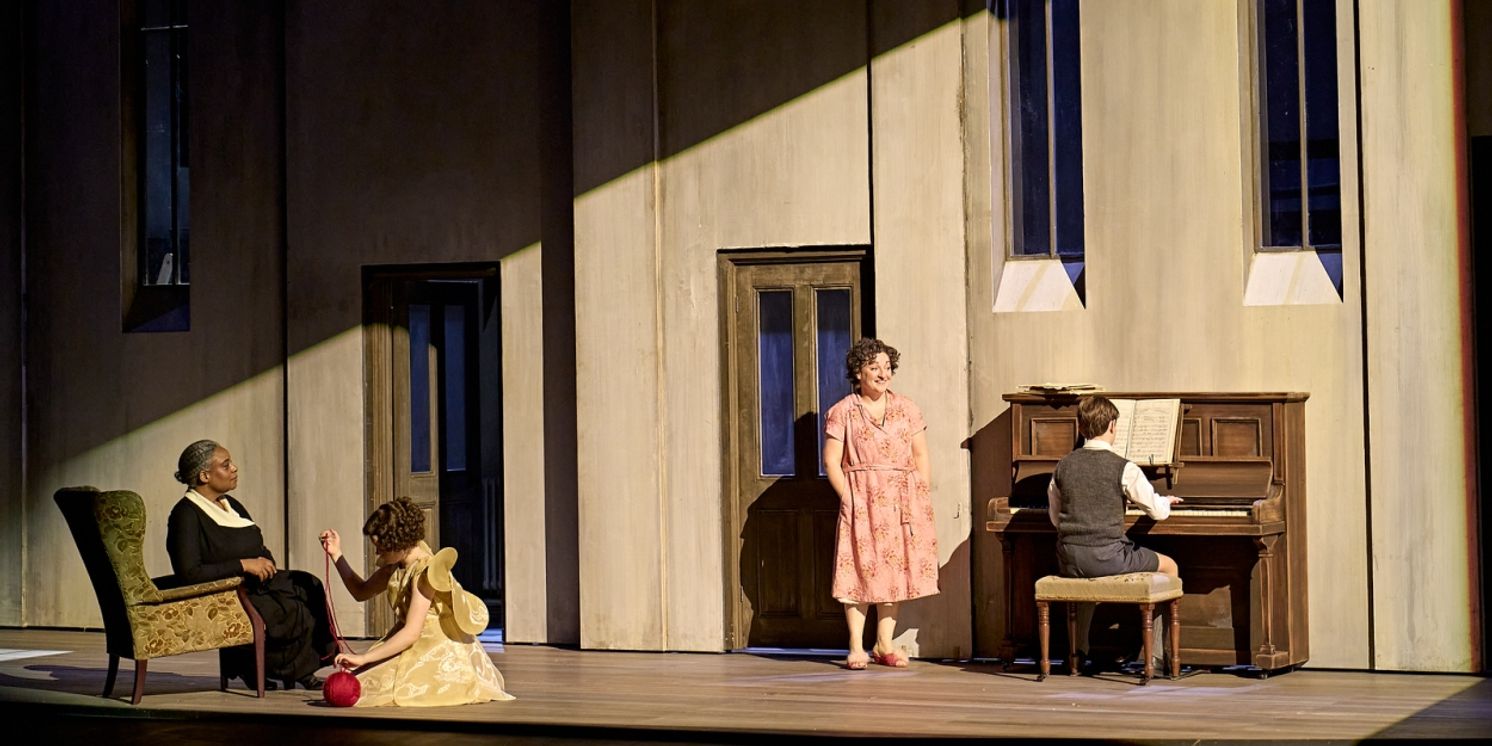Review: THE TURN OF THE SCREW, London Coliseum
Britten's disturbing opera of ghosts, lost children and lost minds beautifully staged by English National Opera

 The best (and worst) element of psychological thrillers is that they are as much - no, more - dependent on the psychology of the viewer than that of the writer. They slip away swiftly from the objective to the subjective, leaving as many questions as answers, a tangle of loose ends that some find just too untidy to be satisfying. Others embrace the ambiguity, aware that life is seldom pinned to one interpretation, from person to person or time to time.
The best (and worst) element of psychological thrillers is that they are as much - no, more - dependent on the psychology of the viewer than that of the writer. They slip away swiftly from the objective to the subjective, leaving as many questions as answers, a tangle of loose ends that some find just too untidy to be satisfying. Others embrace the ambiguity, aware that life is seldom pinned to one interpretation, from person to person or time to time.
Perhaps Benjamin Britten, who was together with Peter Pears from 1939 until his death in 1976, 28 of those years in which such a union was illegal, knew that better than most. Never acknowledging the personal dimension of their professional relationship, he managed the stress of facilitating alternative interpretations for those who supported him or cared not and for those who might have harboured malevolent intentions, the threat of blackmail of public figures never far away.
Britten was bewitched by Henry James’ 1898 ghost story when he read it in the early 1930s, but it was twenty years before he based an opera in its haunted house, the libretto written by Myfanwy Piper. The tale of the governess, the absent father, the two children and the two spirits has been a reliable presence in the repertoire since, and this new version, directed by Isabella Bywater for the English National Opera, proves a worthy addition.

We open on a mental institution, starched nursing uniforms, beds in rows and a woman in some distress. The framing device completed, the opera is constructed in two acts, each of eight scenes, the rigour of its structure squeezing the tourniquet of tension, as matters spiral out of control.
Britten’s music is the force behind that twisting, its dissonance continually poking through more comforting passages, always ratcheted up a notch by Duncan Ward’s controlled 13-piece orchestra. Hymns and nursery rhymes come freighted with horrors and even the instruments seem to turn on themselves as musical themes return, as inescapable as the fate the governess has chosen for herself.
Ailish Tynan is super as the protagonist, her soprano as crystal clear as the governess’s thinking is addled by ghostly apparitions. As the disengaged housekeeper, Mrs Grose, Gweneth Ann Rand brings a beautiful balance to their doomed attempts to communicate, the one over-invested in the fractured family, the other under-invested.
Robert Murray finds real menace in the ghost, Peter Quint, in his appearances at windows and in shadows and, especially, in his eerie calling out to the boy Miles. The history between them is unclear, but there is no doubt that Quint was, and is, a predator. So too Eleanor Dennis’s Miss Jessel, not as overtly sexual as Quint and sadder, but a temptation for the girl, Flora, like a siren across the water of the estate’s lake.
Victoria Nekhaenko and Jerry Louth are revelations as the two pre-teens, whose innocent (or is it) mental disintegration techniques disturb the fragile temperament of the governess, preying relentlessly on her love for them, always listening for the messages from the other side.
Louth’s singing is top drawer, but it’s in his acting, particularly the climactic conclusion, by which he announces himself as a name to watch. The Coliseum is a big stage to command, but there’s no doubting that he does exactly that as Miles is torn apart by Evil’s push and Good’s pull.
On the austere grey, high walled set, occasionally supplemented by somewhat bleak monochrome back-projected video, it’s often hard to tell if we’re in Bly, the country house in which the children live or, thirty years later, in the mental institution within which the governess is tortured by her memories.
But maybe that is the point - maybe it is the same building. In this interpretation, the governess is dealing with her own childhood trauma, inventing two versions of herself to re-enact her psychodrama of loss and loneliness and the search for a resolution that never comes.
That was my thought as I unwound on the way home - you will, of course, have your own.
The Turn of the Screw at the London Coliseum until 31 October
Photo images: Manuel Harlan
Reader Reviews
Videos

